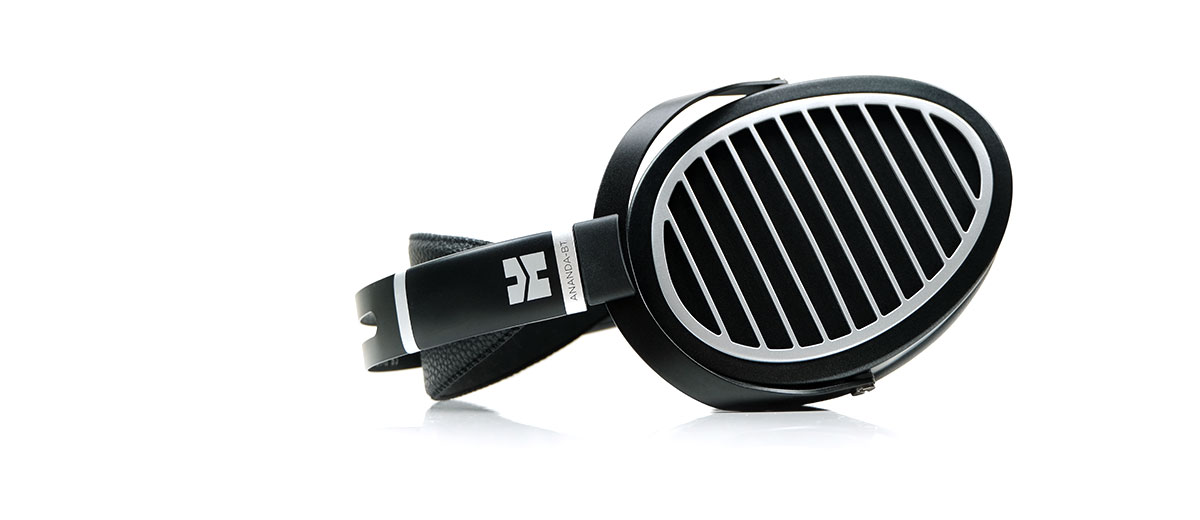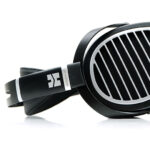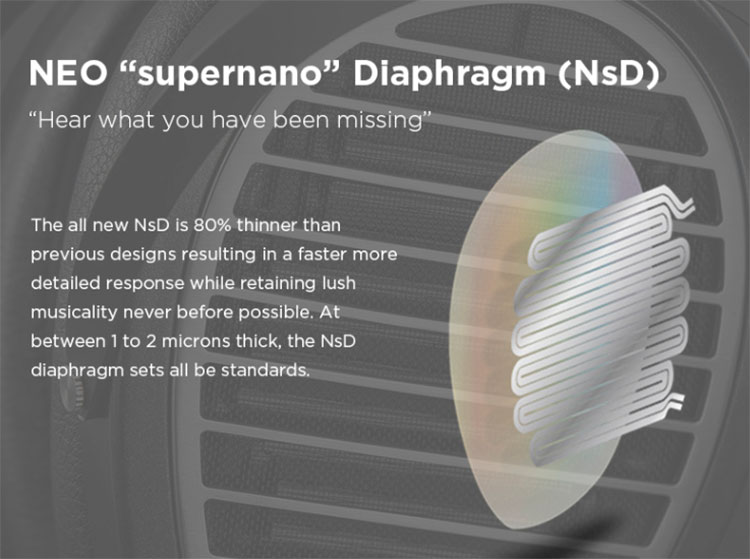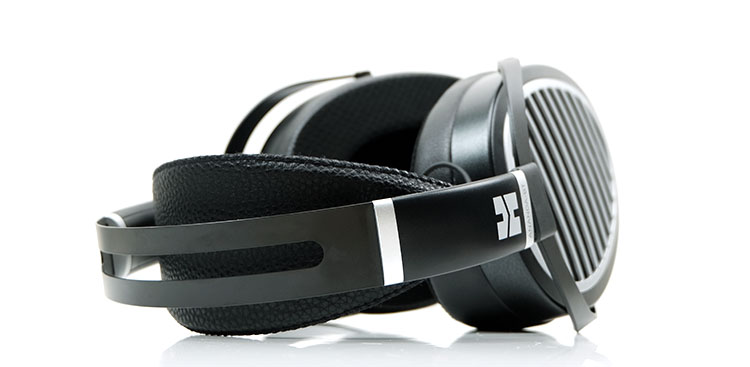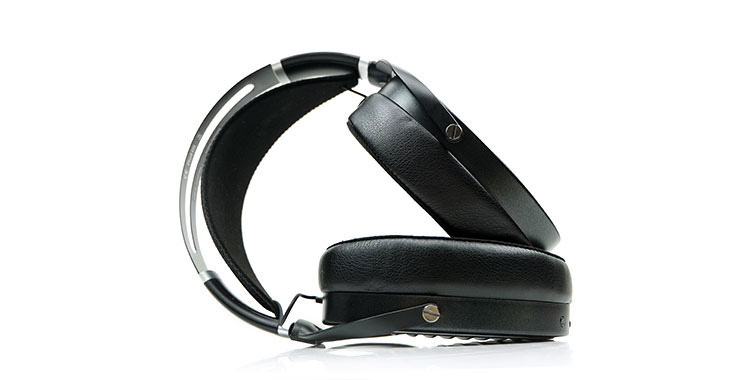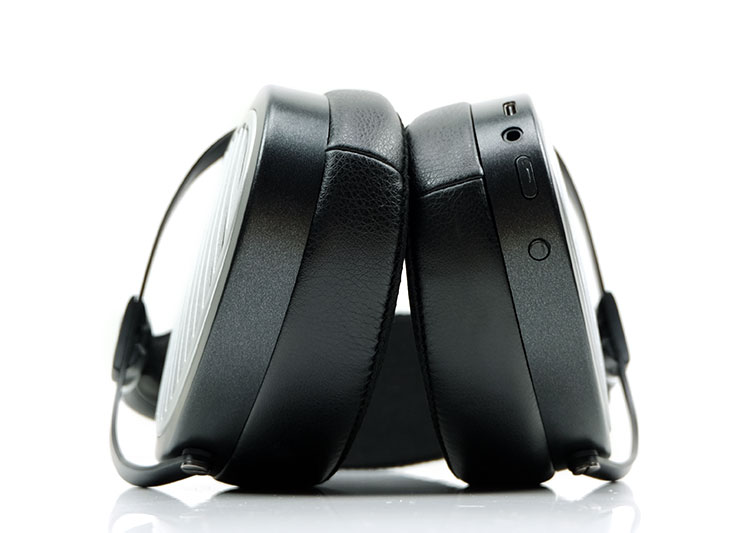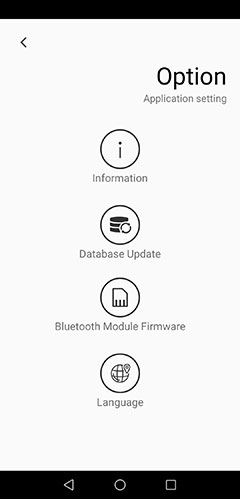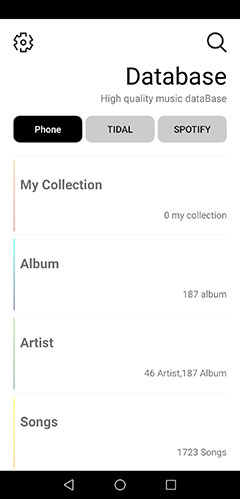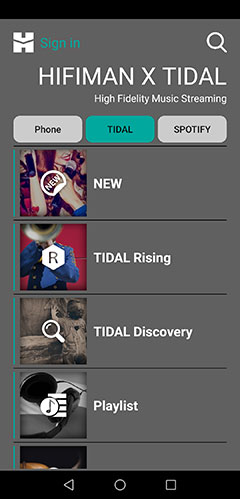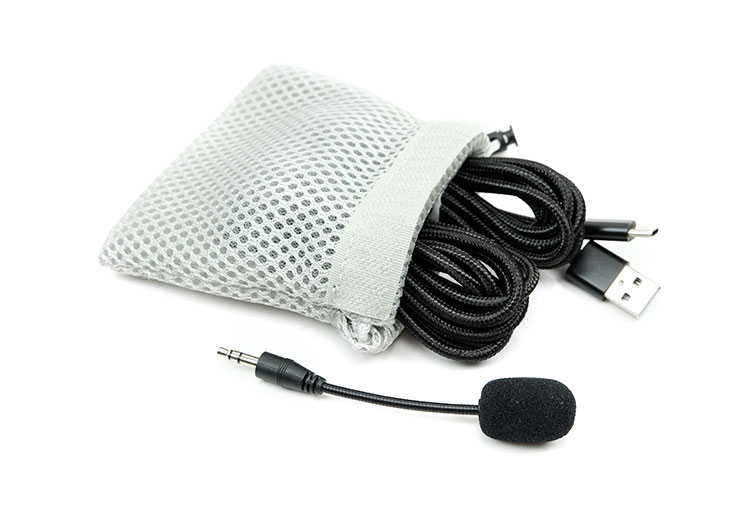The Hifiman Ananda BT is a wireless edition of the original open-back full-sized Ananda planar headphones featuring Bluetooth LDAC decoding capability. It has a price of $999.
Disclaimer: This is a sample sent in exchange for our honest opinion. We thank the team at Hifiman for giving us this opportunity.
To read more about the Hifiman products we have previously reviewed on Headfonics click here.
Note, this review follows our new scoring guidelines which you can read up on here.
Hifiman has been dabbling a little of late with dedicated wireless products with the launch of two R2R2000 BT streaming devices and the TWS600 in 2019.
However, at the backend of 2019, they launched the Ananda BT which is perhaps their most ambitious dedicated high-end wireless product to date, though not their most expensive.
The reason why I say most ambitious is that it is based on the very popular analog Ananda open-back full-sized planar headphone and 99% of the pitch is focused on its wireless functionality.
The R2R2000, the more expensive BT solution can stand on its own two feet as a pure DAP, albeit with limitations and the TWS600 is much cheaper.
The SRP or price is the same as the analog edition at $999 so you have a choice, go wired or go wireless. For an open-back design, this is still for me a home use or transportable headphone rather than a commuting experience so the emphasis is on audiophiles who want flexibility around the home or office.
Features
The Ananda BT is a blend of the existing diaspora of Hifiman wireless and analog tech into something new or more focused crudely speaking. What does that mean?
Well, the core foundation is strong and that is the Ananda planar driver. Quite apart from the NSD tech (see below), the Ananda is Hifiman’s most efficient planar driver to date.
If you are going to move away from analog amplification to a much smaller built-in amplifier then using an efficient driver makes sense.
Neo “supernano” Diaphragm
The Ananda BT driver is the exact same driver so that means the exact same Nano-level slimline diaphragm at 1-2 microns thickness.
This is the same technology they have been using on their flagship headphones such as the HE1000 series for quite a few years and the claim here is that it is up to 80% more efficient than their older designs.
What you can expect therefore is a performance akin to the original Ananda. The only variable will be the BT performance.
Bluetooth & Decoding
The Ananda BT uses a Qualcomm CSR8675 receiver which is primarily responsible also for decoding duties. It is one of only a small group of BT SoC’s that can decode up to LDAC and HWA-LHDC 24BIT/96kHz levels using BT5.0 and that is exactly what you will get with the Ananda BT.
Aside from top-end decoding capability you also get the usual standards of aptX, aptX-HD, and LL right down to AAC and SBC where applicable. Now HWA-LHDC is not automatic and this is quite normal.
Most devices that can transmit HWA-LHDC have to be activated via software platforms such as FiiO’s Music Player. The Ananda BT works on a similar premise with its own Hifiman app that will activate the HWA-LHDC codec.
Topology
Of course, the topology of the Ananda BT has two drivers so from what I am told the receiver outputs via a DAC to a balanced amplifier chipset responsible for ensuring each driver is driven adequately.
This is especially applicable for the wired USB audio scenario which Hifiman has built into the Ananda BT that allows you to output digital audio directly into the headphones. That signal will be decoded by the onboard DAC and converted into analog for passing into the amp chipsets so you cannot bypass it with external amplification.
That is a nice bonus and brings PC/Macs and smartphones into direct play without a BT signal required and allows traditional decoding up to 24/192.
Mic Activated
Hifiman has also included a detachable microphone boom which is plug and play. This I presume, will be a useful addition for gamers and those who like to do voice work and want to take advantage of either the USB digital audio connection or the aptX LL technology inside. I am not a game so you will not hear much from me in this review about that aspect.
Design
Differences
The form factor of the Ananda BT is very close to the original Ananda but not the same. Obvious differences include the connecting wire coming out of the top of each cup and the BT controls/USB socket at the bottom instead of 3.5mm jack connectors.
The gimbals also now have swivel blocks whereas the original used stiff brackets. That allows the Ananda BT to offer a degree of lateral movement compared to the minimal gimbal articulation from the rigid analog Ananda design.
The Ananda BT is also heavier than the analog version by just over 60g at 460g compared to 399g. It can go as high as 490g with the mic boom added.
There are some less obvious differences and I am not sure if this is a running product change on all Ananda’s or just for the BT version. The first is the padding on the inside of the grill creating a small opening onto the driver. The original Ananda has no rectangular felt opening and looks much more exposed.
The second is the arch of the gimbal and the angle of the driver cup. The BT version’s gimbal has a narrower and slightly more curved span. The cups are therefore tighter to the underside of the gimbal with less of a gap.
The final difference is a slightly thicker leather headband strap adjuster. The additional thickness is to allow the electrical wiring to run smoothly from cup to cup without creating a mess and offering a measure of insulation.
Similarities
The Ananda BT design still has those elongated aluminum “window shade” grills and asymmetrical cups with matching wedge-type hybrid pads of the original. The finish is still a darker satin black hard plastic finish which has a little more shine to it than the matte finish of the lower-priced Sundara.
The Ananda BT adopts a similar headband construction to the analog Ananda. It is simpler in functionality than the older swivel system of the Edition X V2 but it does feel more durable and has the advantage of that pivot at the base.
Comfort & Isolation
Headband
So, the swivel blocks on the gimbals are a big difference. Not that the Ananda analog was in any way uncomfortable but it was a criticism that started with the Sundara and stayed with that stiff fit. It also helps offset the additional 60g in weight and makes it a very comfortable experience with that pressure strap system on your scalp.
The headband has what I would describe as a more traditional curve and is less extravagant than the older Edition X and HE560 straps.
Perhaps the shorter “throw” and use of spring metal contribute to a fairly sturdy form factor. It is still notch adjustable but it feels more compact now and not as loose and I think that might be more related to the use of thicker pads.
The design is reasonably wide all the way around and feels quite strong and durable. The one mentioned is the new swivel blocks, these are made of plastic though fairly thick and low profile.
The headband still has a leather adjustment strap underneath for pressure displacement and comfort though it is thicker than the original to allow that wiring to run through it. I can’t feel the difference on my head nor do the wires leave an unintended impression.
Pads
The detachable Ultras Pads seem to have changed and again I am not sure if it is a running change or if mine have gotten flatter over time. The overall effect is a slightly tighter but also comfier clamp with an improved pressure balance.
The new pads, whilst still wedged and oblong, are taller to the rear than the original Ananda. The polyester fabric finish on the inside now stretches out to the very edge of the pad’s shape.
Previously they kind of stopped just shy of the edge and the pleather stitching was in contact with my ear. This should enhance comfort and prevent that annoying itch I got on the old pads after long listening sessions.
Cables
Yes, the Ananda BT does come with 2 cables so it is not wholly a wireless experience. However, these are digital cables and not analog so they do not operate as regular headphones.
How they work
The reason for that is that the drivers have no pass-through capability. The signal must first be received by the DAC and balanced amplifier chipset for conversion to analog. Given the Ananda is already a very efficient planar design you should not find any difficulties in driving them from the USB connection.
Benefits
The benefit here is a consistent timbre. However, it does stymie the ability for that driver to scale somewhat so we cannot tell you if the Ananda BT would have sounded any better with a superior external amplifier and DAC.
Specifications
The two 1.2m cables included are both USB-C on one end with one terminated USB-A on the other end and the second cable with end-to-end USB-C. The USB-A cable is designed to connect the Ananda BT to a PC or USB-A female socket of your choice.
The USB-C-only cable is for portable audio devices that output digital audio via USB-C. This cable can also be used for Chromebooks or slimline pads that tend to offer USB outputs. Just be warned, this is not 100% compatible with all Android platforms so do check our performance section on page 2 to find out more.
Battery Life & Charging
The battery life is just okay but nothing special at 10 hours max and slightly less at a full LDAC decoding rate. Compared to the 30-hour rating of the beyerdynamic Amiron Wireless, its nearest competitor, it is certainly significantly inferior.
However, there may maybe some reasons behind this including the amplification specification to drive the Ananda BT (balanced) and the higher decoding capability (LDAC vs aptX-HD) to name but a few.
Still, if battery life is your major criterion then the Ananda BT will come way down the list compared to wireless consumer dynamic driver headphones such as the Amiron, Bose, or Sony closed-back editions.
Charging is slightly slow at 2.7 hours. I would have loved to have seen a fast charge system inside shortening that to under 2 hours or a fast % charge for shorter cycles.
How to charge is very simple though by simply connecting via the USB port on the left cup and pressing the circular charge button at the base of the same cup. It will glow red until completed.
Controls
Physical
The Ananda BT controls are primarily through the base of the left cup. Here you can pair, charge, and slide on the microphone boom as well as power on and off.
There are two key buttons: a multi-function long button for pairing and powering on and off and a round button for charging. They work quite well, seem fairly intuitive, and are not especially hard to access.
What is missing is a level of volume control from the headphones and that limits the Ananda BT’s usefulness in terms of operating the headphones far away from the transmitting source.
It is one of those things that BT is supposed to offer, flexibility over distance, so taking away a key control and forcing you to shuffle back to the transmitter is self-defeating.
Hifiman App
Hifiman does have an app that allows you to check for firmware updates and install them but there is no ability to tweak control systems or built-in macro EQ systems such as you would find on a TWS or the Sony/Bose apps.
The app also acts as a media manager and will pull in your local library and integrate TIDAL and Spotify through its interface which, at times, I found quite useful though not a complete replacement for the dedicated streaming apps.
The local media manager, (phone label) is quite primitive looking but accurate and well organized, especially with codec information under each title. However, it does generate a new library database every time you fire it up which slows everything down. I would prefer to see this go manual with its DB for faster access.
Also, at times the reception was choppy from the app when going wireless. I am not sure if that is the HWA decoding activating or something dragging down the stability of the BT signal. On LDAC I never got that issue in competing music player software.
Accessories & Packaging
The packaging is not quite as hi-fidelity as the original Ananda which in turn used the original HE400i retail box. This is more of a standard retail box than a display case. It is professional and consistent with their recent output so I don’t have any logistics issues with the design.
The lack of display box potential has more to do with the accessories inside as it comes with a carry case for transport duties as well as a small bag for the detachable mic boom, the two USB cables, a warranty leaflet, and a fairly in-depth owner’s guide.
Carry Case
The carry case is a stiffened shell with a rubber print finish on the outside. It is not the flashiest of cases but it is very functional with a velcro strap handle at the top, a zipper system, and another velcro strap on the inside to hold the headphones securely in place.
There is enough space to throw in the accessories also which come in a very handy little cushioned drawstring netted bag.
Mic Boom
The Mic boom got little usage. It is just not my ‘bag’ for how I use the Ananda BT as I am neither a gamer nor a caller. However, it is pretty light and uses a 3.5mm TRS jack to connect and adds negligible weight to the overall wearing experience. It flexes and curves to how you want it when in use.
I did a few Wired USB test calls using Skype and What’s App on Windows 10 as well as my Samsung Note 9 and the call quality was reasonably clean and clear but the lack of background noise suppression DSP or ANC and the open back system means it is fairly limited in value. It is the gaming in splendid isolation experience that it is geared towards.




